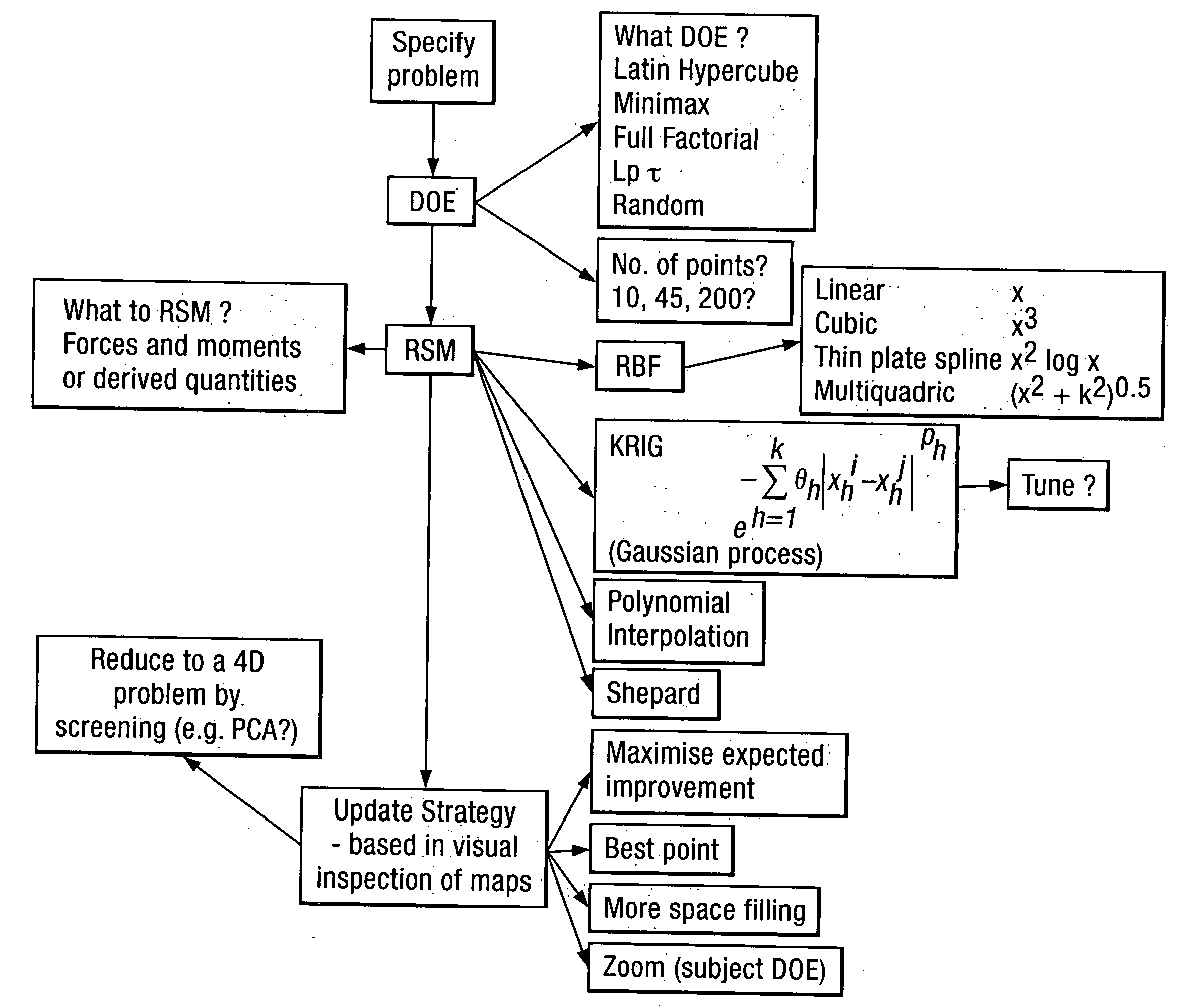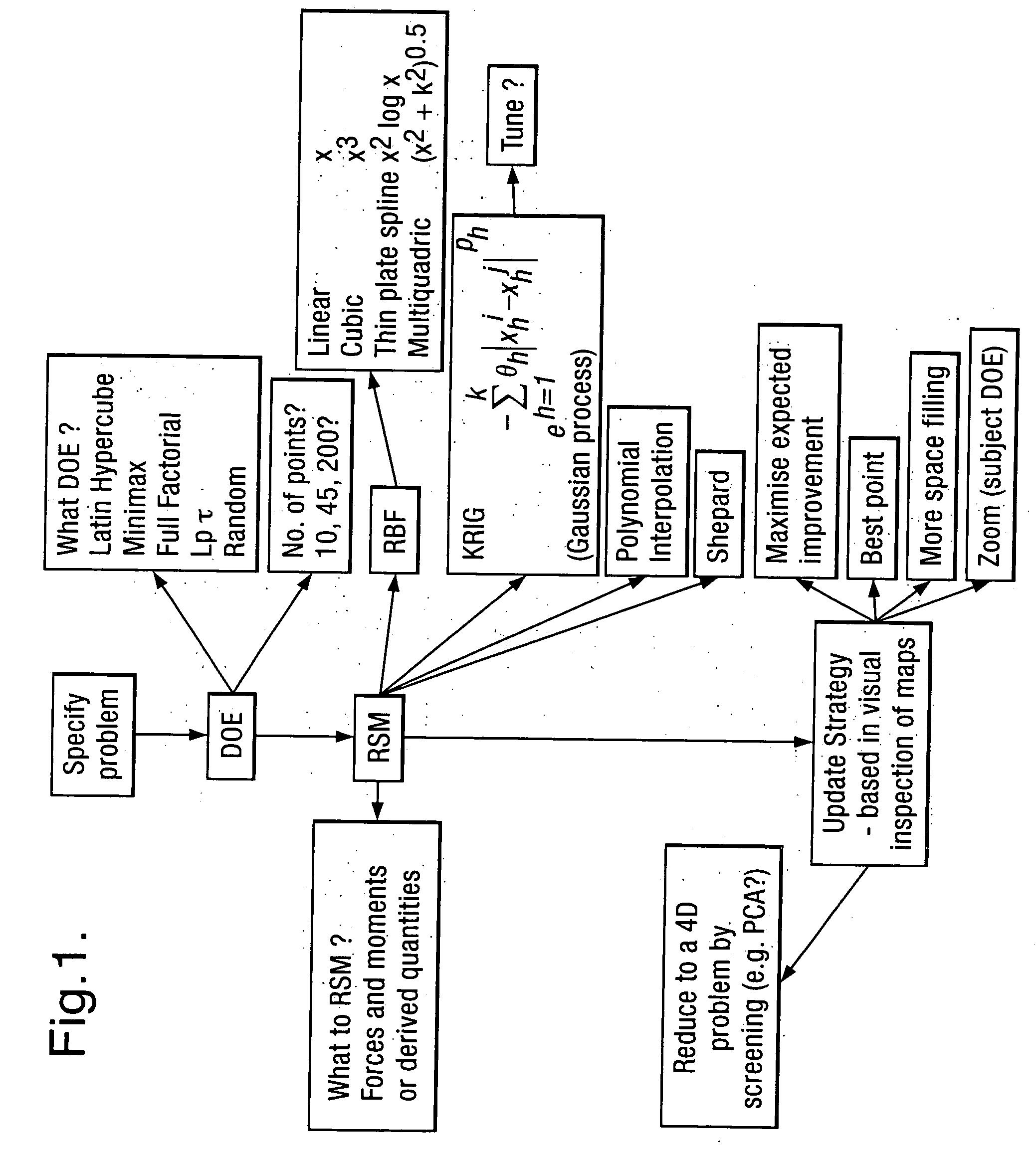Design by space transformation form high to low dimensions
a technology of high to low dimensions and space transformation, applied in special data processing applications, instruments, electric digital data processing, etc., can solve the problems of inability to use techniques that are problematic to use, inefficient known design space exploration techniques applied to complex multi-dimensional design spaces, and prohibitively long time spent preparing individual analysis cases
- Summary
- Abstract
- Description
- Claims
- Application Information
AI Technical Summary
Benefits of technology
Problems solved by technology
Method used
Image
Examples
Embodiment Construction
[0042] This invention is to be described in the following way. The application of visualisation and design space transformation on a two-dimensional analytical problem is described and then extended for use in military aircraft design. A two dimensional visualisation of a representative military aircraft problem is described and then extended to 5, 8 and 14 dimensions. The description includes a specification of the optimisation problems and a modus operandi for a design process is introduced. The visualisation is compared to alternative techniques, such as scatter plots and SOM visualisations. Possible applications of the different visualisation methods, in conjunction with response surface method technology, are also described. The proposed inventive process whereby the transformed design space is then used to obtain the optimum in the design space is explained. The proposed process and usual process are compared for the 5-D problem. It is shown how by implementing the proposed pr...
PUM
 Login to View More
Login to View More Abstract
Description
Claims
Application Information
 Login to View More
Login to View More - R&D
- Intellectual Property
- Life Sciences
- Materials
- Tech Scout
- Unparalleled Data Quality
- Higher Quality Content
- 60% Fewer Hallucinations
Browse by: Latest US Patents, China's latest patents, Technical Efficacy Thesaurus, Application Domain, Technology Topic, Popular Technical Reports.
© 2025 PatSnap. All rights reserved.Legal|Privacy policy|Modern Slavery Act Transparency Statement|Sitemap|About US| Contact US: help@patsnap.com



